Featured Photo Above:
Combined 1903 World Series Photo: Pittsburgh Pirates and Boston Pilgrims
(Color Restoration by Chris Whitehouse of Mancave Pictures)
Baseball History Comes Alive Now Ranked As a Top Five Website by Feedspot Among All Baseball History Websites and Blogs!
(Check out Feedspot's list of the Top 35 Baseball History websites and blogs)

Guest Submissions from Our Readers Always Welcome! Click for details
Scroll Down to Read Today’s Essay
Subscribe to Baseball History Comes Alive for automatic updates. As a Free Bonus, you’ll get instant access to my Special Report: Gary’s Handy Dandy World Series Reference Guide!
Eight Men Out Photo Gallery
Click on any image below to see photos in full size and to start Photo Gallery:
Today we welcome a guest essay from Peter Wilt. Peter is a man after my own heart: just as I do, he has an ongoing interest in the Black Sox scandal. Peter’s interest became almost an obsession, as he set for himself a goal of visiting the gravesites of all “Eight Men Out.” He may be the only person to have done this. In Part One of this two-part series, he tells us of his travels to the graves of Joe Jackson, Happy Felsch, and Buck Weaver. The rest of the eight will be described in Part Two. I hope you’ll find Peter’s story as interesting as I did. -GL
(In the featured photo, we see the 1919 White Sox team photo. You’ll find my player identifications in the comments section below).
My Journey to Find the Eight Men Out
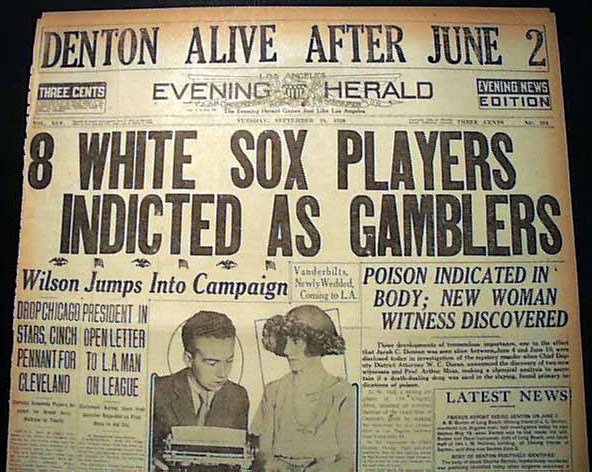
I love baseball, the Chicago White Sox, and history…and I am a taphophile. That is, I am a person who enjoys visiting cemeteries. In particular, I enjoy searching for famous and interesting people’s graves. These interests converged to create a personal lifetime goal to visit the graves of the Chicago Black Sox 1919 ”Eight Men Out”. This is the story of the recently completed search, a quest that is more rewarding for the journey than its eight destinations.
LEARNING ABOUT THE BLACK SOX
As a young boy, I first learned about the Black Sox sacrilege from my dad who grew up on the south side of Chicago. He was born a few years after the eight were banned. Dad was an ardent fan of the poor excuse of a baseball team that the Sox had become in the 1930s and he supported the Pale Hose through thin and thinner. His description of the banned players to me was generally sympathetic, but he made no attempt to whitewash the players’ guilt.
Later in my childhood, I learned more details of the case through flawed books and motion pictures that immortalized the eight dishonorably discharged ball players. In seventh grade, I read Eliot Asinof’s Eight Men Out and began to realize that it was a complicated case. The book of course painted the gamblers and White Sox owner Charles Comiskey as the real villains. It claimed the gamblers lured a group of mostly naive players to sell out the team’s owner who treated them poorly with low pay and broken promises. The conspiracy was painted in the book as an extension of a practice that was not uncommon during the period.
A dozen years after reading Eight Men Out in 1974 and three years after reading W.P. Kinsella’s “Shoeless Joe”, in 1983, I took the first step in my journey. I didn’t realize it would grow into a bucket list to visit all eight resting places. Nor did I realize I would also visit the graves of several supporting characters in the Black Sox scandal including Charles Comiskey, Kennesaw Mountain Landis and Harry Grabiner. The journey began almost 40 years ago and is finally complete.
#1: JOE JACKSON, 1984
I started at the top with a trip in 1984 to Greenville, South Carolina with my girlfriend, now wife, Ann, to see Joe Jackson’s grave. It was our first vacation together and, perhaps, I may have neglected to share with her the real reason for the destination. When Ann later realized it was to see Joe’s grave, she did not complain. That’s when I knew she was the one for me.
I don’t recall all the details of the trip, but I do know that we made a stop at the Bob Jones University bookstore to scoop up some unusual Bob Jones apparel and merchandise and we attended an inaugural season Greenville Braves game. The Braves were being managed by Leo Mazzone who went on to become one of the best pitching coaches of the modern era.
The next day Ann and I drove to the Jackson home at 119 E. Wilburn Avenue which was then privately owned. Twenty-two years later, the home was cut in half and transported a mile and a half to its current location, 356 Field Street, across from the Greenville Curve’s Fluor Field. In 2008 it was converted into the Shoeless Joe Jackson Museum and Baseball Library.
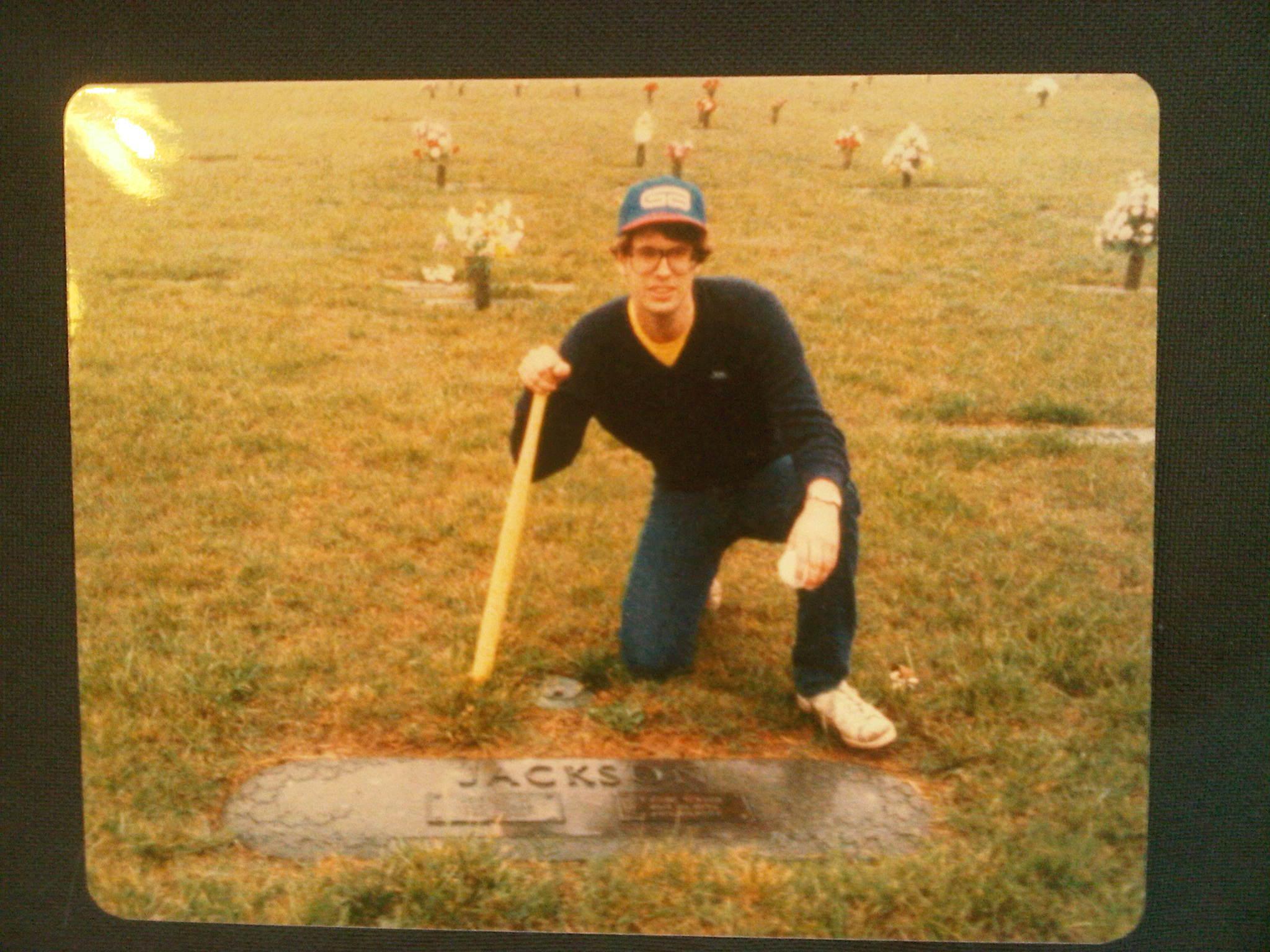
We then fulfilled the mission of the trip by visiting Joe’s grave at Woodlawn Memorial Park. In an age prior to www.FindAGrave.com I took the old-fashioned way of finding his grave by going to the cemetery office to get a map. Joe and Katie have a grass-level marker in Section V, plot 333. Ann took a photo of me wearing my newly minted Greenville Braves hat, holding onto a yellow Wiffle Ball bat to commemorate the occasion. My search for all eight Black Sox graves had achieved its first milestone without my knowledge that this would be a quest at all. That bucket list commitment wouldn’t come for nearly three decades.
In between, I did return to Greenville and Joe’s grave in 1986 and added to my Joe Jackson pilgrimage with a pair of Dyersville, Iowa visits to pay homage to Kinsella’s baseball novel and the “Field of Dreams” film. But the gravesite journey didn’t pick up again or even become a personal bucket list for decades.
#2: HAPPY FELSCH, MARCH, 2012
It was in the spring of 2012 when I was reminded that Happy Felsch, “the Pride of Teutonia Avenue” , lived out his life in my adopted hometown of Milwaukee, Wisconsin. After finishing his blacklisted career playing outlaw baseball in Wisconsin, Montana, the Dakotas, and Canada, he returned home and lived in a second-floor flat on Milwaukee’s northwest side. A quick internet search showed he was interred at Wisconsin Memorial Park just a dozen miles from my home in suburban Milwaukee. The next day, with Felsch’s final resting place data in hand courtesy of www.FindAGrave.com, I ventured over to the cemetery to pay my respects.
Wisconsin Memorial Park is a large cemetery with several mausoleums and beautifully kept grounds. The crypt for Felsch and his wife Marie is in “The Gardens of the Last Supper” mausoleum at the south end of the park. Before spotting Felsch’s crypt, I came upon a historic piece of statuary. I have a fondness – some would say obsession – for statues. So the serendipitous discovery of the world’s largest carving made from a single block of marble blew me away by itself. And then to find out that this magnificent carving of the Last Supper was less than 20 feet from Felsch’s crypt was stunning.
Visiting the final resting places of all eight blacklisted Chicago White Sox players was now a life goal.
#3: BUCK WEAVER, APRIL, 2012
On Major League Baseball’s 2012 opening weekend, the journey continued with a visit to the only Chicago burial site of a Black Sox player. The undeservedly blacklisted third baseman Buck Weaver was buried in Mount Hope Cemetery on the far south side of Chicago.
My quest had garnered the interest of several friends who joined me including Night Train Veeck, grandson of Baseball Hall of Famer and two-time owner of the Chicago White Sox Bill Veeck. Spending time with Train was much fun. We share a passion for life, people, the White Sox, and finding ways to entertain people creatively. Eight years later we began working with each other to launch Chicago House AC, Chicago’s newest professional soccer team.
Our group of seven also included Mary Kay, whose great uncle Tony Piet followed Weaver by 15 years as the White Sox third baseman.
The Find A Grave website told us Buck had a grass-level marker and is buried in Section 35. The seven of us fanned out across plot 35 searching for Weaver’s grave using the clue that Weaver’s grave was “near the road”. I offered a free 7-ELEVEN Slurpee to the person who found Weaver’s grave first. My friend Sara, who just so happens to love Slurpees, cashed in moments after the offer was made by discovering Buck’s grave marker.
Visiting Buck’s grave was pretty special. As I did at Shoeless Joe Jackson’s grave in Greenville 26 year earlier, I posed with a yellow Wiffle Ball bat. After our group separated, I drove an hour to my father’s grave where I shared the news of my visit to Buck’s grave. It was a way for me to connect with my father who introduced me to the Black Sox when I was a young boy.
(To be continued…)
Peter J. Wilt
Subscribe to our website, “Baseball History Comes Alive!” with over 1200 fully categorized baseball essays and photo galleries, now rapidly closing in on the one million hits mark with 988K hits and over 800 subscribers: https://wp.me/P7a04E-2he
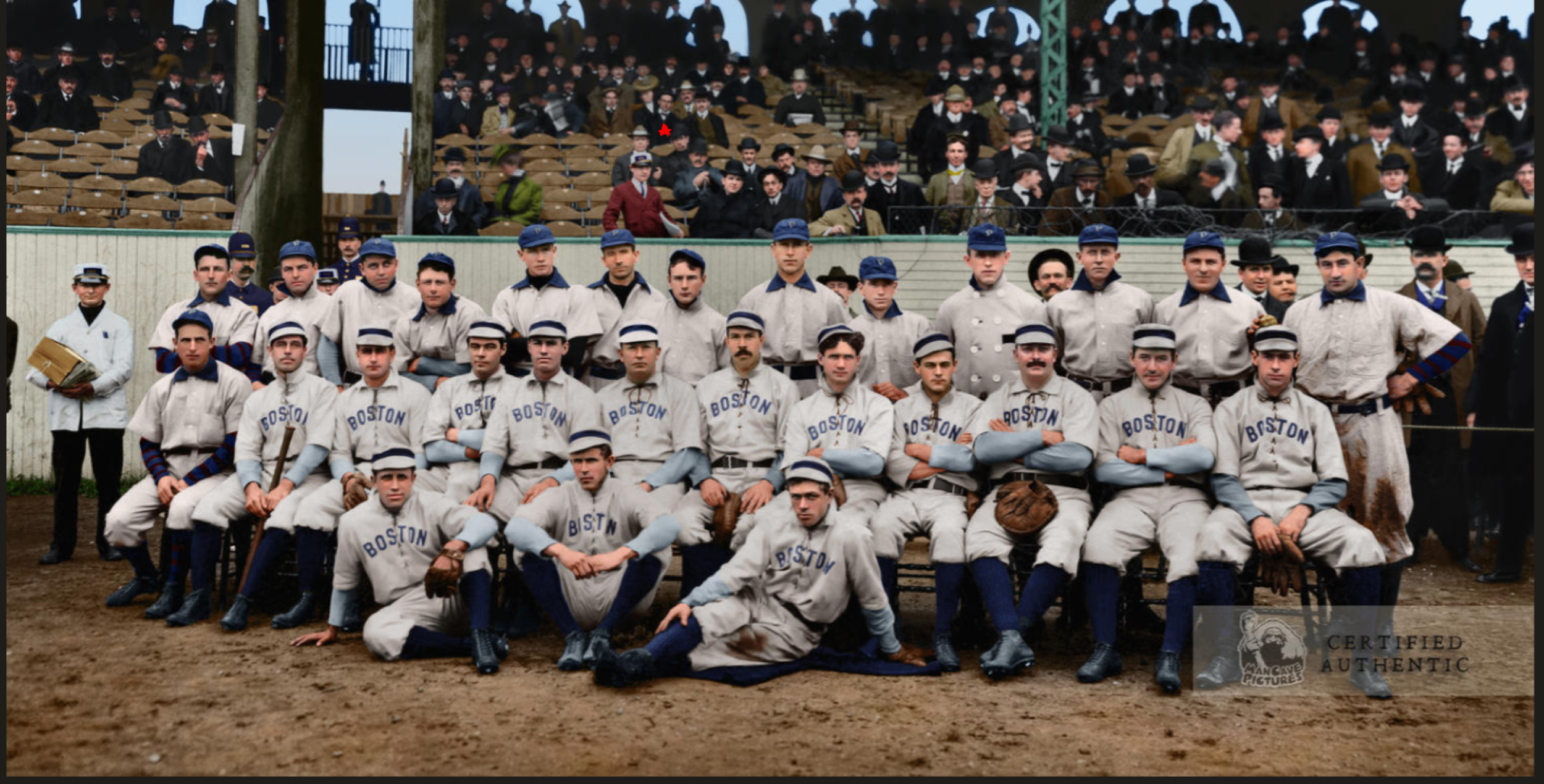
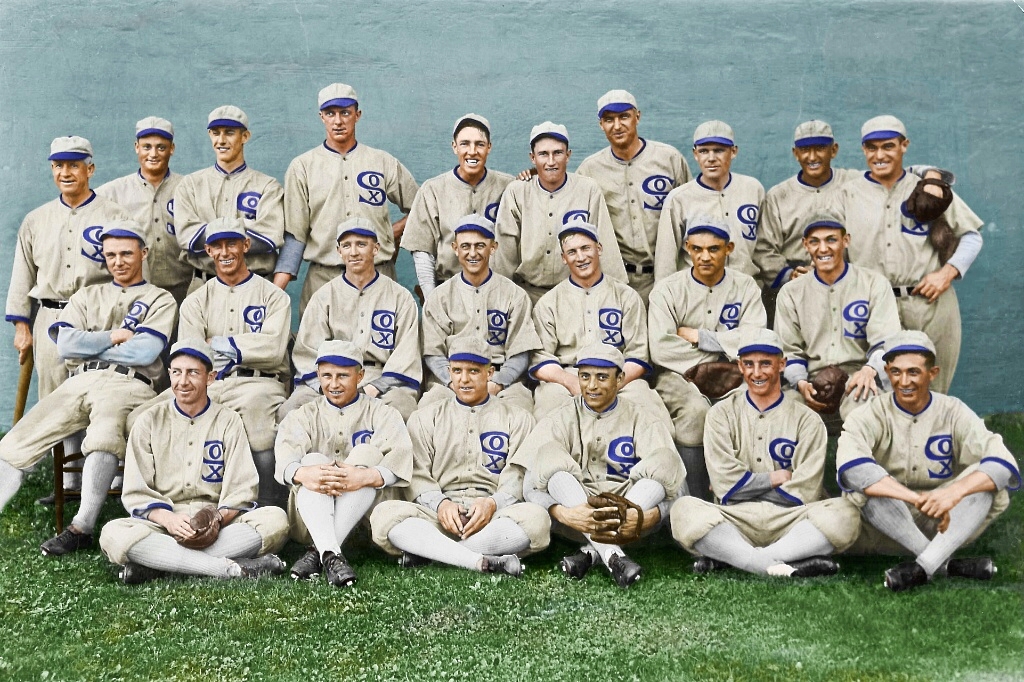
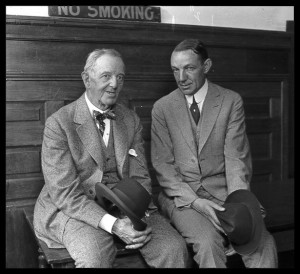
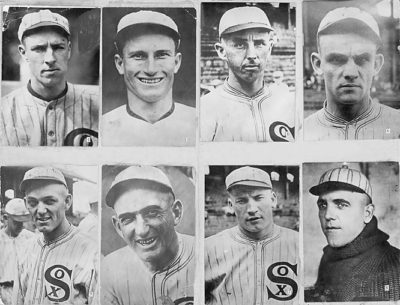
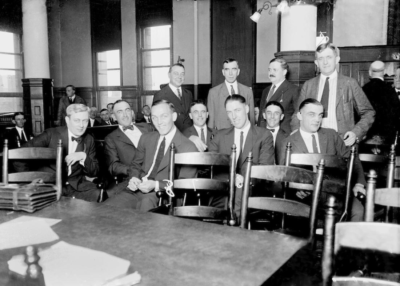
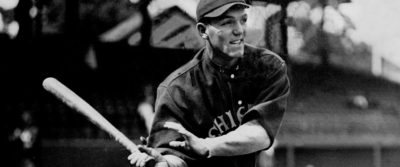
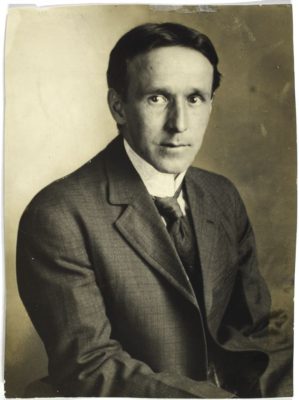
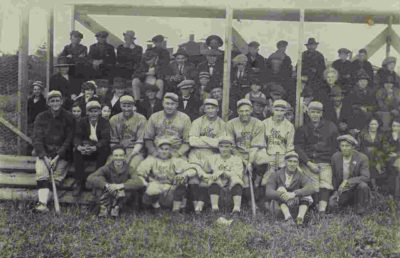
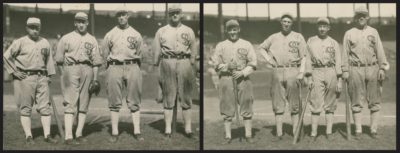
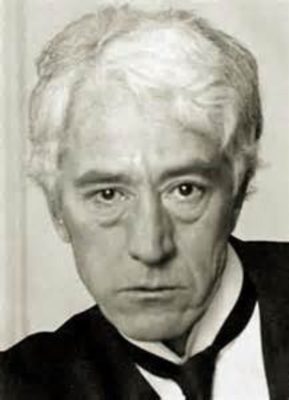
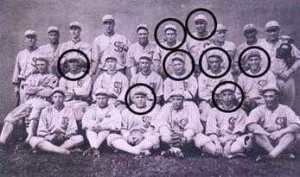
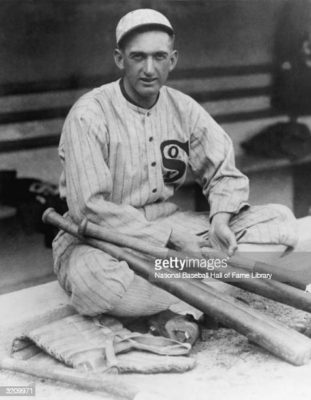
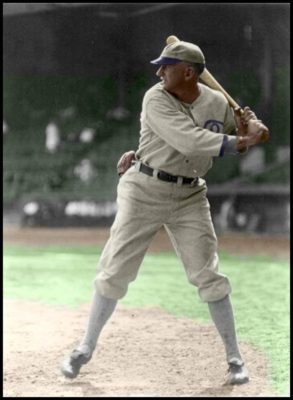
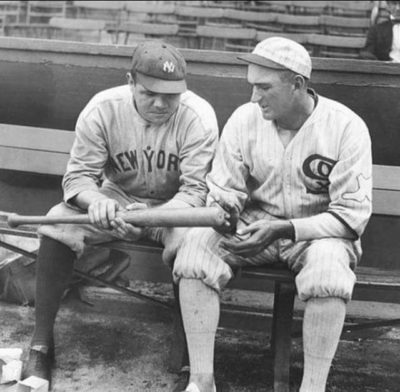
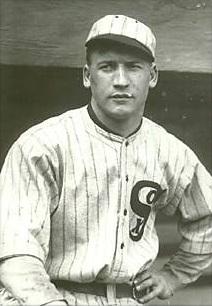
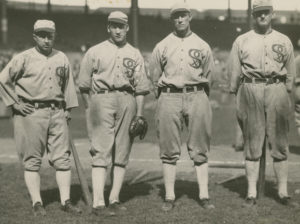
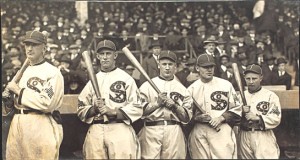
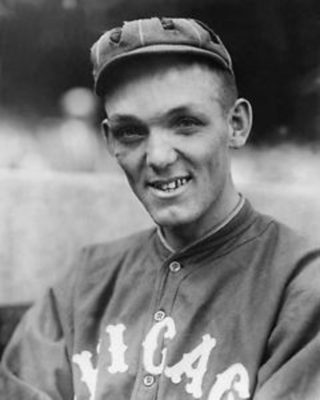
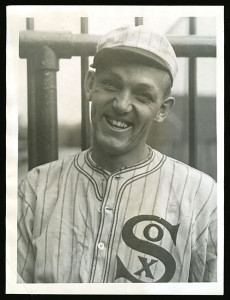
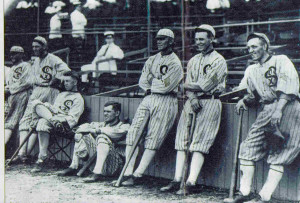

1919 White Sox Player Identifications
Top Row, L-R: Kid Gleason(Mgr.), John Sullivan (P), Roy Wilkinson (P), Grover Lowdermilk (P), Swede Risberg (SS), Fred McMullin (3B), Bill James (P), Eddie Murphy (OF), Joe Jackson (OF), Joe Jenkins (C). Middle Row, L-R: Ray Schalk (C), Shano Collins (OF), Hervey McClellan, Dickie Kerr (P), Hap Felsch (CF), Chick Gandil (1B), Buck Weaver (3B). Front Row, L-R: Eddie Collins (2B), Nemo Liebold (OF), Eddie Cicotte (P), Erskine Mayer (P), Lefty Williams (P), Byrd Lynn (C).
Thank you for posting this, Gary. It was great to meet you, talk about our shared interests, and discover this great website!
A version of this essay (before the journey was completed) was first shared via SABR’s Black Sox Scandal Research Committee Newsletter in 2021.
I’d been a lifelong Cleveland Indian fan and never knew that a key component to the team winning the pennant and World Series in 1920 was the dismantling of the White Sox lineup in the aftermath of the scandal. But there it is on the newspaper page reprinted that companies the story.
“8 White Sox Players Indicted as Gamblers” is the banner headline, but below and to the left it says “Drop Chicago Stars, Cinch Pennant for Cleveland.” Guess I need to go back and re-read my history.
Of course! Unintended consequences can emerge anywhere, even after 103 years.
Thank you, Peter Wilt!
Thanks Tom…that’s an interesting point that I had never thought of either!
Gary, as I’ve previously told you, I have been a Palehose junkie probably since I was still wearing diapers, so this essay by Mr. Wilt is intriguingly interesting to me. {Is “intriguingly” really a word ? hahaha}. Anyway, like Mr. Wilt, I knew about the 1919 “fix” as a very young lad, and over the many decades since, have always been keen on eagerly learning more & more details about it that I previously had not been aware of. Due to my own research, reading articles and books about “The Scandal”, and BHCA posts, I have satisfied a multitude of my curiosities about it. This contribution by Mr. Wilt will; no doubt, further increase my knowledge of the Black Sox. IMHO, he is correct when he states that Buck Weaver was “undeservedly blacklisted”. Buck was probably the only one of the banned eight who had no culpability in the misdeed. The BHCA content is always great ! Thnx.
Thanks Tom…I’m trying to give as much exposure to the WHite Sox as I can. Even though I’m a Cub fan, it’s really disgusting how the media in Chicago gives much more attention to the Cubs than the White Sox. So I’m doing my little bit to help…
Peter, I too enjoy visiting cemeteries, though my trips are strictly for business, as I’m a genealogist. However, occasionally, I wander over to some other grave sites, such as those in Homewood Cemetery near Pittsburgh, where I have lived for the past 31 years. Among my mother-in-law’s ancestors, were also the graves of jazz great Erroll Garner, and HOF third-baseman Pie Traynor. If I could attach a picture of that grave, I would, but there were several baseballs, including one extremely beat up one, along with a pristine one in a clear plastic case, gently resting atop the gravestone.